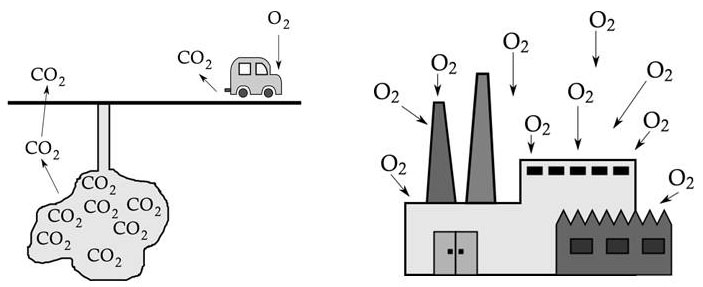Monitoring CO2 storage
Charlotte van Leeuwen
In 1992, a treaty with the objective to “achieve stabilization of the concentration of greenhouse gasses in the atmosphere at a level that would prevent dangerous anthropogenic interference with the climate system” was developed by the UN in Rio de Janeiro. In 1997, the Kyoto protocol was added to this treaty. This protocol sets binding targets for the industrialized countries for reducing their emissions of greenhouse gasses, carbon dioxide being the most important one.
There are several ways to reduce the emissions of carbon dioxide. Besides saving energy and replacing fossil fuels with renewable alternatives such as windmills and solar energy, it is possible to store carbon dioxide underground instead of emitting it to the atmosphere. This technique is called carbon capture and storage (CCS).
Carbon dioxide accumulations exist naturally in the subsurface of the earth. They followed from biological activity and chemical reactions between rocks and fluids. Natural gas fields often also contain carbon dioxide. Engineered storage of carbon dioxide was first carried out in the early 1970s in the United States as part of Enhanced Oil Recovery (EOR), a method used to extract more oil from a field. The storage of carbon dioxide as a greenhouse gas mitigation method was first done in 1996 in a gas field under the North Sea.
The many natural accumulations have proven that reservoirs are able to confine carbon dioxide for millions of years. The depleted gas and oil fields that are (planned to be) used for engineered storage of carbon dioxide were able to confine the natural gas and oil for millions of years. These reservoirs can therefore be considered save for storage. Nevertheless, it is very important to monitor a storage reservoir carefully. There are multiple methods for monitoring the movement of the carbon dioxide in the subsurface. It is also possible to monitor inside the wells, which represent the most likely paths for leakage. With these techniques, potential leaks can be discovered in an early state. In the case however that carbon dioxide migrates into the ground water or even to the atmosphere, techniques should be available to assess potential impacts. Besides, leaks from pipelines transporting the carbon dioxide from the factory to the storage site should also be found in time.
One way to detect leaks of carbon dioxide is simply measuring the carbon dioxide concentration in the atmosphere. Unfortunately, finding leaks in this way is not that simple due to the high natural variability and local sources and sinks such as highways, factories and forests influencing the signal. It is therefore only possible to detect large leaks in this way.
A monitoring experiment has been set up in Ten Post together with the Energy Centre of the Netherlands (ECN). Five relatively cheap carbon dioxide sensors (similar to the ones used in the School – CO2 – Web ) are installed here to measure the carbon dioxide concentration in the air. The goal of this experiment is to investigate the effectiveness of this system to find a leak in a pipeline. The sensors will be improved by extensive calibration and characterization in the lab of the CIO to optimize the results.


Also without leaks, it will be interesting to measure both carbon dioxide and oxygen. The carbon and oxygen cycles will be disturbed by the storage of carbon dioxide on a large scale. Factories equipped with a storage facility will consume oxygen in large quantities without returning carbon dioxide.
The Centre for Isotope Research has already experience with measuring oxygen and carbon dioxide together continuously. It is currently done at our measurement station Lutjewad and also at the F3 gas platform in the North Sea. The purpose here is to study the uptake of carbon dioxide by the ocean. In this process, carbon dioxide and oxygen are also uncoupled (van der Laan-Luijkx et al, 2010) just as it is the case for CCS.
In this research project, a new device is developed for detecting leaks at CCS sites. Although it is based on the previous two devices, there are some major adaptations. An important thing is the required flexibility of the new system, which will not have a fixed location such as the other two. Besides, the new device will measure d 13 C in addition to carbon dioxide and oxygen. This can be helpful in the case that the stored carbon dioxide is isotopically distinct from its surroundings.
This research project is part of CATO2 : the Dutch national research program for carbon dioxide capture, transport and storage.
References:
Van der Laan – Luijkx, I.T., R.E.M. Neubert, S. van der Laan and H.A.J. Meijer (2010) – Continuous measurements of atmospheric oxygen and carbon dioxide on a North Sea gas platform – Atmospheric Measurement Techniques, 3, 113 – 125
